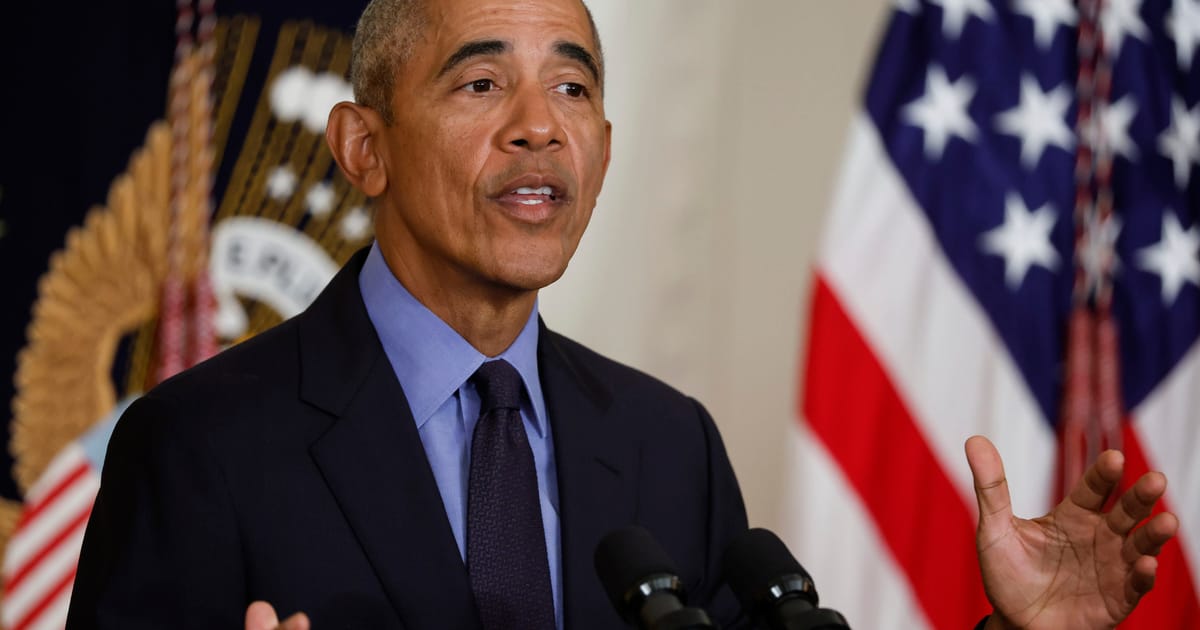
Ron DeSantis appears to have succeeded in his attempt to bully the College Board into stripping Black Lives Matter, discussion of gay Black thought leaders (perhaps like James Baldwin, whose mother was born enslaved?), and multiple well-known Black authors from their African American Studies Advance Placement course.
Over at the Popular.info newsletter, Judd Legum et al noted yesterday that the College Board’s revenue is increasingly coming from selling these courses (more and more students aren’t taking the SATs — their other revenue source — as colleges move away from basing admissions on testing), so to maintain their viability and their CEO’s $2.5 million annual salary, they apparently decided they pretty much had to bow to DeSantis’ threats and those from the right wingers who preceded him and he was imitating.
In addition to threatening teachers with prison if they don’t remove books from classrooms, arresting Black men who were told they could vote and did so, and now demanding menstrual histories from high school girls (presumably to look for pregnancies?), DeSantis has laid a reign of terror against minorities of all sort across his state.
Bullying like this is at the core of authoritarian behavior, as I noted in my Daily Take yesterday about DeSantis, and we need to start calling things what they are. And that must start with fascism.
Right now Ron DeSantis and multiple other Republican politicians are trying to out-fascist each other. While the media reports on the various efforts to criminalize women, ban books, end history lessons, and fill our communities with weapons of war, only rarely do they mention the political philosophy behind it all.
Although the word was only coined in the 1920s by Benito Mussolini to describe his movement in Italy, it describes a system of government and method for enacting political change that’s as old as civilization.
And it’s been on a rapid ascent in America since Trump rolled out his hate-and-fear campaign for president in 2015.
Fascism is intertwined with oligarchy
America’s first major confrontation with fascism wasn’t World War II: it was the Civil War. During the four decades leading up to that conflict, the American South had abandoned all pretense of democracy.
The Confederacy was an ethno-nationalist police state, run by a small number of plantation-owning oligarch families like Robert E. Lee’s, and even being white was no protection from the Confederacy’s brutality.
Although they weren’t enslaved, poor whites had it rough in the Confederate states. They had no real access to due process, and in most cases were prevented from voting if they didn’t own land. Even when they did vote, ballot boxes were stuffed or ballots were burned when elections didn’t turn out the way the oligarchs wanted.
Through the period from the 1830s to the 1860s, as I document in The Hidden History of American Oligarchy, southern plantation owners’ wealth and consolidation of political power radically increased because of the invention of the Cotton Gin that started spreading across the south in the 1820s.
This new machine could clean as much cotton as 50 hardscrabble white farmers or enslaved people; thus, those few massive plantations that could afford a Gin soon economically and politically dominated the South in the era leading up to the Civil War.
By manipulating cotton prices, giant plantations ran small white-owned farms out of business. The plantation oligarchs would then buy up the distressed farms and use the poor white farmers’ own indebtedness to force them to work what had previously been their own land as sharecroppers.
When poor whites protested or tried to fight back, they were often imprisoned on trumped-up charges or just killed and buried in unmarked graves. As Keri Leigh Merritt documents in Masterless Men: Poor Whites and Slavery in the Antebellum South:
“[P]oor whites made particularly inviting targets for a southern legal system dominated by slaveholders… On the eve of secession, slaveholders were still jailing poor whites for small amounts of debt, publicly whipping thieves, and auctioning off debtors and criminals (for their labor) to the highest bidder.
“In addition to the region’s sophisticated legal system, the Old South also had an extremely effective extralegal system to keep the lower-class whites in their places. From vigilance committees to minutemen groups, these organizations helped maintain both slavery and the southern social hierarchy, and ultimately forced a divided region to wage an unwanted war.”
Matthew McConaughey made a movie about Newton Knight, a poor southern white man who led a resistance movement against the Confederate oligarchs. Ten of his white compatriots were lynched by the plantation owners and left hanging as a warning to others, but he survived and escorted Sherman in his famous march through Georgia in 1864. Over 100,000 poor whites fled the South to fight in the Union Army.
According to reporter Greg Palast, one of those plantation empires persists to this day in the form of Georgia Governor Brian Kemp.
Thus, we find, fascism isn’t a new thing to America.
Our second explicit encounter with fascism happened in the 1930s, when openly Nazi groups rose across the nation. They marched in uniforms with swastika armbands through cities across America. Thousands assembled in New York City.
Oscars Film Shows Nazi Rally at Madison Square Gardenyoutu.be
World War II largely put an end to that, and the movement went back underground until the rise of Donald Trump.
Fascism’s main doctrines are hate and intolerance
As President Lyndon Johnson pointed out back in the day:
“If you can convince the lowest white man he’s better than the best colored man, he won’t notice you’re picking his pocket. Hell, give him somebody to look down on, and he’ll empty his pockets for you.”
Divide and conquer is the key to spreading fascism. Separate people from each other by skin color, ancestry, gender, and religion and then convince each group that the other is out to get them.
Former Secretary of State and author of Fascism: A Warning, the late Madeline Albright, noted in an interview with Vox:
“[F]ascism is not an ideology; it’s a process for taking and holding power. A fascist is somebody who identifies with one group — usually an aggrieved majority — in opposition to a smaller group. It’s about majority rule without any minority rights. Which is why fascists tend to single out the smaller group as being responsible for or the cause of their grievances.”
Fascism’s main tools are violence and intimidation
Fascists are, essentially, bullies. They attack those with less power than themselves and use those attacks to hold power or gain more power for themselves.
Straight white men control the vast majority of America’s wealth and political power, disproportionate to their population, which is exactly why the cis-Christian-white-male-supremacist fascist movement within today’s Republican Party focuses their attacks on immigrants, women, people of color, and the LGBTQ+ community.
From Trump tearing families apart at the border and trafficking the youngest Hispanic children into “Christian” adoption systems, to DeSantis flying asylum seekers to Martha’s Vineyard, to attacks on drag queens and librarians as “groomers,” denying the essential humanity of others is foundational to fascist performance and recruiting art.
From the Reconstruction era to the 1960s, lynching and the noose were a principal instrument of intimidation. Since the Reagan Revolution’s embrace of unlimited ownership of weapons of war and “open carry” laws passed in Red states across America, guns — and, particularly assault rifles — have become the new noose.
People wanting to proclaim their embrace of white supremacy and their willingness to use violence to maintain it in America have even taken to proudly wearing tiny AR15 lapel pins.
Fascists showing up at state capitols fully armed, wearing battle armor, and waving Confederate flags are simply trying to replicate the successes Mussolini’s and Hitler’s volunteer militias (the Blackshirts and the Brownshirts, respectively) had at cowing the Italian and German populations during fascism’s last golden age.
Every new mass shooting, every assassination of Black people (Emanuel AME Church, Buffalo supermarket), Hispanics (El Paso Walmart), queer people (Pulse nightclub), Asian Americans (Atlanta massage parlor), Jews (Tree of Life Congregation), children (the list of school shootings is too lengthy for this article), and white allies (Kyle Rittenhouse’s targets) amps up the terror people in these groups feel when they see armed white men.
Which, of course, is the goal of most of these fascist terrorists. The early fascist movements in Italy and Germany were similarly pockmarked by stochastic terrorist outbursts against random members of minority groups.
The United States is the only advanced democracy in the world that suffers from such regular acts of domestic terrorism.
This is because we are the only country in the developed world with national media organizations and a major political party that have embraced fascist rhetoric and tolerate — congratulate, in fact — fascist speech and behavior.
Fascism’s main mechanism is authoritarianism
Fascism requires authoritarianism to succeed. When Ron DeSantis threatens librarians, teachers, professors, high school girls, and college health clinics, for example, he’s asserting his power as an authoritarian leader.
In his second book about authoritarians in the Republican movement (Authoritarian Nightmare: Trump and His Followers), former Nixon White House Counsel John Dean notes:
“[A]uthoritarianism involves two kinds of authoritarians, an authoritarian leader and authoritarian followers. Most people mean the first when they say someone is an ‘authoritarian,’ but we shall demonstrate that the followers deserve the title too and, in their own way, are the more important element in the compound, the carbon in a carbon-based system.”
Roughly a quarter of Americans, according to a recent survey, are authoritarian followers and wannabee authoritarian leaders must compete for their loyalty and votes.
This leads to a performance art sort of “arms race” among those who aspire to lead the growing fascist movement in the United States and ultimately, thus, around the world. The stakes are high so they are working hard to one-up each other.
— When one authoritarian leader/Republican with higher ambitions criminalizes abortion, the next will go after birth control.
— When one bans discussion of Black history in schools, the next will ban books and prosecute teachers.
— When one throws hundreds of thousands of Black and Hispanic voters off the rolls, the next will criminalize voting so he can arrest and parade Black people before the cameras.
— When one bans mask mandates, another will invoke a grand jury to investigate vaccine manufacturers.
— If one villainizes Hispanic immigrants as “murderers and rapists,” another will put into place a vast surveillance system to identify workers in America sending money to relatives in Mexico.
Republicans have decried Social Security and similar programs as “socialist big government” that threatens Americans’ freedoms since the 1930s, but these same politicians today are busily erecting fascist big government systems to spy on their citizens, threaten girls and women with imprisonment, deny representation to racial minorities, and prevent access for their citizens to basic rights like healthcare — all while cutting taxes for their morbidly rich sponsors.
Fascism destroys lives and nations
Fascist politicians competing for the title of “toughest” or most authoritarian destroy the lives of the people they target as part of their strutting performances. Witness the life-changing experiences of poll workers in Georgia, women and girls in Red states, or police in the US Capitol.
When a nation reaches the peak state a full fascism, that system is so intense and fragile that it rarely lasts more than a decade or two, although the Spanish fascist movement survived World War II and lasted all the way into the 1970s.
But by the time nations realize they’re dealing with an internal fascist movement it’s often too late. Once entrenched, fascist movements usually only collapse when the fascist leader at the top dies or is overthrown or the nation itself is defeated in war.
If just five or six Republican state officials had gone along with Donald Trump’s effort to overthrow democracy in the United States and install himself as America’s first fascist dictator we’d be in that position right now.
Yet even after that close encounter with a fascist in the White House, our media and politicians — with a few exceptions — are reluctant to use the F-word.
But, to paraphrase FDR, our allegiance to the institutions of America — to American republican democracy — requires the identification and repudiation of fascist behavior and fascist politicians.
Our media and politicians need to figure out that it’s not a slur to call a fascist a fascist. It’s merely descriptive.
We must start explicitly calling out fascist behavior before it’s too late.




